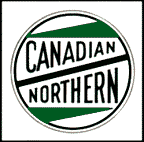| It is currently Fri Apr 19, 2024 12:11 pm |
|
All times are UTC - 5 hours [ DST ] |
Painting with Imron
Moderators: Rick Rowlands, tomgears, Randy Hees
 
|
Page 1 of 3 |
[ 39 posts ] | Go to page 1, 2, 3 Next |
|
| Termite7 |
|
||
|
Joined: Thu Aug 21, 2008 8:29 pm Posts: 397 |
|
||
| dwa2503107 |
|
||
|
Joined: Tue Oct 30, 2012 11:22 pm Posts: 73 Location: York, PA |
|
||
| k5ahudson |
|
||
|
Joined: Tue Aug 24, 2004 6:30 am Posts: 758 |
|
||
| David Dewey |
|
||
|
Joined: Fri Oct 01, 2004 1:33 pm Posts: 481 Location: Oroville, CA |
|
||
| mjanssen |
|
||
|
Joined: Mon Aug 23, 2004 12:57 am Posts: 255 Location: Sandpoint, ID |
|
||
| David Dewey |
|
||
|
Joined: Fri Oct 01, 2004 1:33 pm Posts: 481 Location: Oroville, CA |
|
||
| jayrod |
|
||
|
Joined: Thu Oct 08, 2015 11:54 am Posts: 1789 Location: New Franklin, OH |
|
||
| Overmod |
|
||
|
Joined: Thu May 24, 2012 1:37 pm Posts: 2230 |
|
||
| SD70dude |
|
|||
Joined: Tue Feb 20, 2018 7:08 pm Posts: 317 Location: Alberta, Canada |
|
|||
| ajb3243 |
|
||
|
Joined: Sat Sep 15, 2018 8:18 pm Posts: 3 |
|
||
| Overmod |
|
||
|
Joined: Thu May 24, 2012 1:37 pm Posts: 2230 |
|
||
| SD70dude |
|
|||
Joined: Tue Feb 20, 2018 7:08 pm Posts: 317 Location: Alberta, Canada |
|
|||
| Trolleyguy |
|
||
|
Joined: Sat Aug 21, 2004 10:50 pm Posts: 217 Location: www.easttroyrr.org |
|
||
| ajb3243 |
|
||
|
Joined: Sat Sep 15, 2018 8:18 pm Posts: 3 |
|
||
 
|
Page 1 of 3 |
[ 39 posts ] | Go to page 1, 2, 3 Next |
|
All times are UTC - 5 hours [ DST ] |
Who is online |
Users browsing this forum: Google [Bot], Majestic-12 [Bot] and 193 guests |
| You cannot post new topics in this forum You cannot reply to topics in this forum You cannot edit your posts in this forum You cannot delete your posts in this forum You cannot post attachments in this forum |

